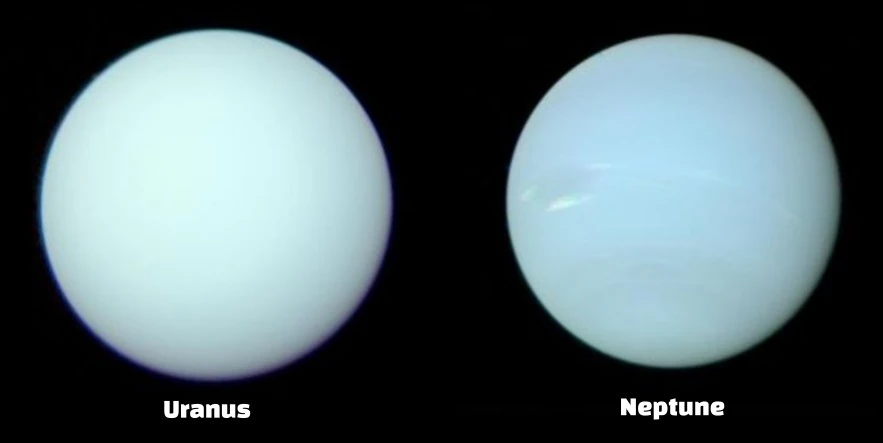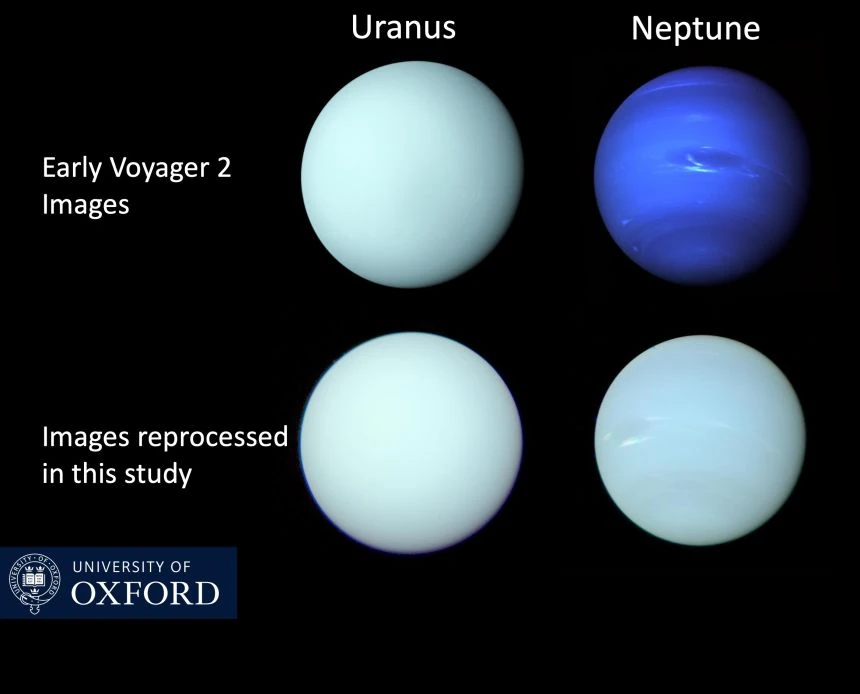True colors of Uranus and Neptune revealed

Recent research led by Professor Patrick Irwin from the University of Oxford has unveiled that Neptune and Uranus, traditionally thought to be distinctly blue and green respectively, are in fact much closer in color – both portraying shades of greenish blue.
Neptune’s rich blue hue and Uranus’s green tinge have long been distinct features in our understanding of these distant ice giants. However, a new study published in the Monthly Notices of the Royal Astronomical Society challenges these popular perceptions, revealing that both planets are actually a similar shade of greenish blue. Led by Professor Patrick Irwin from the University of Oxford’s Department of Physics, the research signifies a significant shift in how we visualize these celestial bodies.
Traditionally, Neptune has been depicted as a deep azure, while Uranus was thought to bear a pale cyan appearance. This discrepancy in color perception arose from images captured during the 20th century, notably by NASA’s Voyager 2 mission, which were not accurately balanced to reflect the planets’ true colors. Specifically, early images of Neptune were enhanced to reveal atmospheric details, inadvertently skewing its color towards an artificial blue.
Using data from the Hubble Space Telescope’s Space Telescope Imaging Spectrograph and the Multi Unit Spectroscopic Explorer on the European Southern Observatory’s Very Large Telescope, the researchers recalibrated the composite color images. This approach allowed them to determine the true apparent color of Uranus and Neptune. Their findings show that both planets exhibit a greenish-blue hue, with Neptune displaying a slightly more intense blue due to its thinner haze layer.

The study also delves into the seasonal color changes of Uranus, particularly during its 84-year orbit around the Sun. Observations from the Lowell Observatory and subsequent modeling revealed that Uranus appears greener at its solstices when one of its poles is directed towards the Sun, while it adopts a bluer tinge during equinoxes.
The unusual spin of Uranus, nearly on its side, amplifies the impact of reflectivity changes in the polar regions on the planet’s overall brightness. The researchers attribute this color shift to the poles’ reduced methane abundance and increased thickness of brightly scattering methane ice particles.
Professor Irwin remarked on the significance of matching a quantitative model to imaging data, highlighting that this study is the first of its kind to explain the color changes of Uranus during its orbit.
Meanwhile, Dr. Heidi Hammel of the Association of Universities for Research in Astronomy, who has extensively studied both Neptune and Uranus but was not involved in the study, expressed that the comprehensive research should finally resolve longstanding misperceptions about the planets’ colors.
References:
1 New images reveal what Neptune and Uranus really look like – Oxford University – January 5, 2024
Featured image: Patrick Irwin, University of Oxford


Commenting rules and guidelines
We value the thoughts and opinions of our readers and welcome healthy discussions on our website. In order to maintain a respectful and positive community, we ask that all commenters follow these rules.